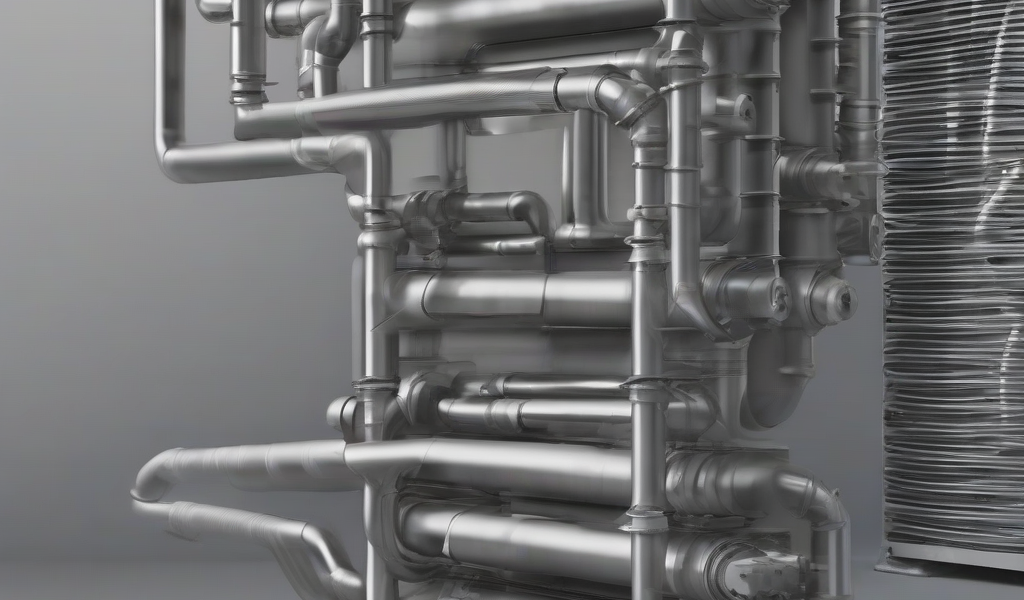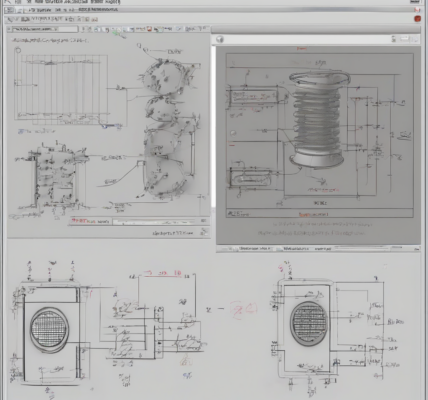Heat Exchangers: The Heart of Furnace Efficiency and Safety
Heat exchangers are critical components in furnaces, playing a pivotal role in maximizing thermal efficiency and ensuring safe operation. They facilitate the transfer of heat from the combustion process to the heating medium, whether it’s air for heating a building or a process fluid for industrial applications. Understanding the various types, functionalities, and considerations in selecting the appropriate heat exchanger for a furnace is crucial for optimal performance and longevity.
Types of Heat Exchangers Used in Furnaces
Several types of heat exchangers are employed in furnaces, each suited to specific applications and operating conditions. The choice depends on factors such as the desired heat transfer rate, temperature range, pressure drop, and the nature of the fluids involved.
-
Shell and Tube Heat Exchangers:
These are among the most common types, featuring a cylindrical shell containing a bundle of tubes. The hot combustion gases flow through the shell, while the heating medium (e.g., water or air) flows through the tubes. Heat transfer occurs through the tube walls. Variations include single-pass and multi-pass configurations, impacting efficiency and pressure drop.
-
Plate Heat Exchangers:
These exchangers consist of a series of thin, corrugated plates stacked together. The hot and cold fluids flow through alternating channels formed by the plates. Plate heat exchangers offer high heat transfer rates due to their large surface area and are compact and lightweight. They are particularly suitable for applications with lower pressures and temperatures.
-
Air Preheaters (Regenerative and Recuperative):
In furnaces requiring very high temperatures, air preheaters are used to preheat the combustion air before it enters the combustion chamber. This improves combustion efficiency and reduces fuel consumption. Regenerative preheaters use a rotating matrix to alternately heat and cool the air, while recuperative preheaters use a heat exchanger to transfer heat from the exhaust gases to the incoming air.
-
Finned Tube Heat Exchangers:
These exchangers enhance heat transfer by adding fins to the tubes, increasing the surface area available for heat exchange. They are commonly used in applications involving gases, where the lower thermal conductivity of the gas necessitates increased surface area for efficient heat transfer.
-
Spiral Heat Exchangers:
These heat exchangers consist of two spirally wound tubes, one inside the other. The hot and cold fluids flow in opposite directions through the two tubes, resulting in counter-current flow, which maximizes heat transfer. They are suitable for applications with viscous fluids or fluids containing solids.
Factors Influencing Heat Exchanger Selection
The selection of a suitable heat exchanger for a furnace involves careful consideration of several factors:
-
Heat Transfer Rate:
The required heat transfer rate dictates the size and type of heat exchanger needed. Higher heat transfer rates require larger surface areas or more efficient heat exchanger designs.
-
Temperature Range:
The operating temperatures of the hot and cold fluids influence the material selection for the heat exchanger. High-temperature applications necessitate materials with high melting points and good corrosion resistance.
-
Pressure Drop:
The pressure drop across the heat exchanger affects the pumping power required. Lower pressure drop is desirable for energy efficiency.
-
Fouling:
Fouling, the accumulation of deposits on the heat transfer surfaces, reduces efficiency. The choice of material and design should minimize fouling potential. Regular cleaning or specialized designs may be necessary.
-
Corrosion:
The corrosive nature of the fluids involved impacts material selection. Corrosion-resistant materials are crucial to ensure the longevity of the heat exchanger.
-
Cost:
The initial cost and lifecycle cost of the heat exchanger should be considered. Factors such as maintenance, cleaning, and replacement costs should be included in the overall assessment.
-
Space Constraints:
The available space for the heat exchanger can influence the design and type chosen. Compact designs, such as plate heat exchangers, might be preferred in space-constrained applications.
Materials Used in Furnace Heat Exchangers
The material selection for furnace heat exchangers is critical, influenced by the operating temperature, pressure, and the corrosive nature of the fluids involved. Common materials include:
-
Stainless Steel:
Offers good corrosion resistance and high-temperature strength, making it suitable for many applications.
-
Carbon Steel:
A less expensive option, but its corrosion resistance is lower, limiting its use to specific applications.
-
Nickel Alloys:
Provide excellent corrosion resistance and high-temperature strength, making them suitable for demanding applications with aggressive chemicals or very high temperatures.
-
Copper Alloys:
Offer good thermal conductivity and corrosion resistance, making them suitable for various applications.
-
Ceramic Materials:
Used in high-temperature applications where metallic materials are inadequate. They possess excellent high-temperature strength and corrosion resistance.
Maintenance and Inspection of Furnace Heat Exchangers
Regular maintenance and inspection of furnace heat exchangers are essential for ensuring efficient and safe operation. Neglecting maintenance can lead to reduced efficiency, increased fuel consumption, and even equipment failure.
-
Regular Cleaning:
Fouling can significantly reduce the heat transfer efficiency of the exchanger. Regular cleaning, either chemical or mechanical, is necessary to remove deposits and restore performance.
-
Leak Detection:
Regular leak checks are vital to prevent potential hazards associated with leaks of hot gases or fluids. Leaks can lead to energy loss, safety risks, and environmental damage.
-
Inspection for Corrosion:
Visual inspection for signs of corrosion is essential, especially in areas prone to high temperatures or corrosive environments. Early detection of corrosion can prevent catastrophic failures.
-
Performance Monitoring:
Monitoring the heat exchanger’s performance parameters, such as temperature differences and pressure drops, can provide early warnings of potential issues.
Safety Considerations
Safety is paramount when dealing with furnace heat exchangers. High temperatures and pressures pose significant risks if safety precautions are not observed. Key safety considerations include:
-
Pressure Relief Valves:
Pressure relief valves are essential to prevent excessive pressure buildup, which can lead to rupture and potential hazards.
-
Temperature Monitoring:
Accurate temperature monitoring is crucial to ensure the heat exchanger operates within its safe operating limits.
-
Proper Insulation:
Adequate insulation helps to prevent heat loss and reduces the risk of burns.
-
Emergency Shutdown Systems:
Implementing reliable emergency shutdown systems ensures the ability to quickly shut down the furnace in case of an emergency.
-
Regular Inspections and Maintenance:
Regular inspections and maintenance are crucial to identify and address potential safety hazards before they escalate.
Advanced Heat Exchanger Technologies
Research and development continuously strive to improve heat exchanger performance and efficiency. Advanced technologies include:
-
Microchannel Heat Exchangers:
These exchangers feature extremely small channels, which lead to increased surface area and improved heat transfer rates. However, they can be more susceptible to fouling.
-
Nanofluids:
Employing nanofluids as the heating or cooling medium can significantly enhance heat transfer capabilities. The addition of nanoparticles improves the thermal conductivity of the fluid.
-
Computational Fluid Dynamics (CFD):
CFD simulations are used to optimize heat exchanger designs and predict their performance under various operating conditions.
Conclusion (Omitted as per instructions)




